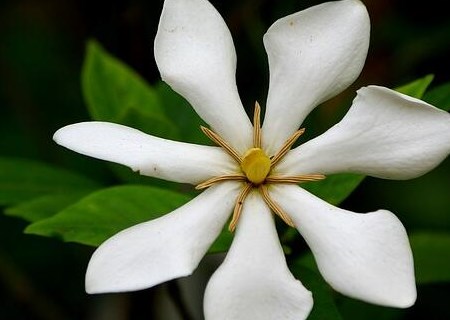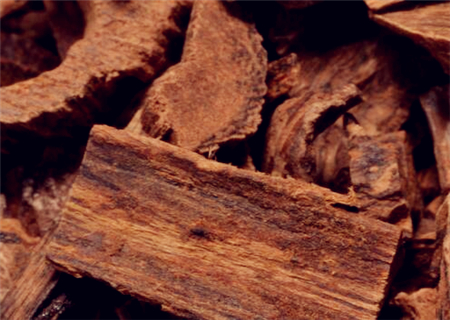What are the seed planting methods of Rubiaceae Gardenia jasminoides? How to do gardenia leaves yellowing? Prospect of planting Gardenia
Gardenia, also known as gardenia, yellow gardenia. Belongs to Rubiaceae, with luxuriant branches and leaves, evergreen leaves and fragrant flowers. What are the seed planting methods for gardenia here? How to do gardenia leaves yellowing? What are the prospects for growing gardenia? In addition to ornamental, its flowers, fruits, leaves and roots can be used as medicine, which has the effect of purging fire, removing annoyance, clearing heat and diuresis, cooling blood and detoxification. Flowers can be used as spices for tea, and fruits can reduce inflammation and dispel fever. It is an excellent fragrant flower.

Planting method of Gardenia jasminoides
1. Seed selection
Choose ripe, flawless ripe fruit, generally dark red, look full is ripe. Put the fruit with a shell in the sun or in the shade to dry. After handling, it can be stored.
Cut the pericarp or use scissors to take out the seeds before going to the soil. Prepare a basin of warm water, put the seeds in and wash them by hand. Wash all the adherent impurities on the seeds and rest for a period of time. Some immature dried seeds will float on the water and be poured out together with the impurities.
The seed that sinks at the bottom is the mature seed that can really be used to sow. Fish it out, put it on a clean cloth or bamboo mat and take it to a ventilated place to dry.
2. Sowing time
Generally sowing in spring, the temperature rises, the climate is more suitable.
3. Sowing method
When planting ①, the best culture medium is soft and fertile sandy soil, and the location is sunny or close to the edge of the field. Turn and flatten the soil to remove impurities and stones from the soil. Deep ploughing is about 1.2 feet, and if the soil is good, it is about 5 feet high and 6 inches high. Fertilize according to the proportion of 25 piculs of human manure per mu. When the soil is dry, open the mud block and flatten the field. Mix the seeds with plant ash, stir evenly and sprinkle them in the sowing ditch. About five jin of seeds are used in one mu of land, covered with a layer of fine soil and covered with straw mats for water supply.
② has basically finished sowing seeds here. It is necessary to replenish water frequently and keep the soil moist. Seedlings can emerge in about 20 days.
IV. Post-maintenance
After the seedlings grow, take off the straw mat. After a period of maintenance, you can see that the seedlings grow five or six leaves. Pull out the seedlings that are too dense at the time of planting, along with the diseased and weak seedlings that are not growing well, and remove the weeds if they grow in the ground.
2. Analysis and solution of yellowing of gardenia leaves.
1. Too much watering leads to yellow leaves (water yellow): if the cotyledon is watered too much, the young leaves will be dim and the old leaves will not be affected, but the leaves will be yellowish green and the new leaves will not grow.
Solution: put the flowers out of the pot in a cool, ventilated place and wait for the soil to dry before putting them back into the basin. When there is lack of water, the tip or edge of the leaf is withered and dry, the old leaf is withered and yellow from the bottom up, and the growth of the new leaf is relatively normal, so it should be fully watered and thoroughly watered.
2. Long-term lack of water leads to yellowing of mast flower leaves (dry yellow): gardenia likes water, and it is easier to grow in the south wind, but the leaves will wither and yellow in the north because it is relatively dry and the air is not wet enough.
Solution: therefore, it is best to put gardenia in a large tray, the tray is covered with water, at the same time, pay attention to sprinkling water to the leaves every day to make the leaves fully moist.
3. Poor ventilation leads to yellowing of mast flower leaves (burning yellow): the environment in which gardenia grows needs to be ventilated and moist with bright light. If you often do not open the window, there will also be signs of yellowing at the edge of the leaf.
Solution: remember to open the window every day for ventilation.
4. Too low temperature leads to yellowing of mast flower leaves: too low temperature will also cause leaf yellowing.
Solution: so in the process of gardenia breeding, we should pay attention to anti-freezing in winter, early spring and early winter night should also pay attention to keep warm.
5. Excessive fertilization causes the leaves to turn yellow (fat yellow): the veins of the leaves turn green and yellow, but the periphery is still green. There is a sudden loss of green, dry and yellow leaves after fertilization, which are all caused by hypertrophy and thickening.
Solution: there are only two ways to deal with fat yellow so far: flood irrigation and de-basin root washing.
6. Lack of fertilization leads to yellowing of leaves (fat yellow): insufficient fertilizer will also cause plant yellowing, such as iron deficiency, leaves are light yellow or white, and leaf veins are still green. At this time, it is necessary to spray 0.2 {bf}-0.5 {bf} ferrous sulfate for prevention and control. Due to magnesium deficiency, the old leaves turn yellow at first, then the new leaves turn yellow, and the veins are still green. At this time, 0.7 {bf}-0.8 {bf} boron and magnesium fertilizer can be sprayed to prevent and cure.
7. Improper lighting causes the leaves of mast flowers to turn yellow: if the light is too strong, macula appears in the sunny part of the leaves. At this time, you only need to move them to the shade for maintenance, and the new leaves will no longer have macula. When there is not enough sunlight, the leaves will turn yellow or even fall off.
Solution: just put it in the sun to replenish the sun.
III. Planting prospect of gardenia
Take 200mu as an example, 160plants of Gardenia jasminoides are planted per mu, and the seedlings buy two-year-old seedlings (that is, trees are two years old) to hang fruit since the first year of planting, and each plant produces about 1 kg of fresh fruit (calculated according to 1 kg), a total of 32000 kg. In the second year, each plant produced 2 kg of fresh fruit, a total of 64000 kg, and the third year began to produce 5 kg per plant, a total of 160000 kg. In the fourth year, the yield of fresh fruit per plant is 8 kg on average, and the annual yield of fresh fruit of Gardenia jasminoides is 200mu × 160plant / mu × 8kg / plant = 256000 kg.
According to the calculation of 3 yuan / kg (conservative average price), the annual output value of the peak period in the fourth year is 256000 kg × 3 yuan / kg = 768000 yuan.
Time: 2019-03-18 Click:
- Prev

How much is the price of the diamond in the plant worth one gram? How many years does it take to plant to produce fragrance? Artificially planted several
Shen Xiang, the name of traditional Chinese medicine. The main producing areas are Guangdong, Hainan, Guangxi, Fujian and other places. Known as the diamond in plants, it is worth a lot of money. So how much is the price of incense worth per gram? How many years does it take to plant to produce fragrance? How many years of artificial cultivation can you make money? What is the price of Chen Xiang now? How much is a gram worth?
- Next

Cultivation techniques of ash tree
Cultivation techniques of ash tree
Related
- Fuxing push coffee new agricultural production and marketing class: lack of small-scale processing plants
- Jujube rice field leisure farm deep ploughing Yilan for five years to create a space for organic food and play
- Nongyu Farm-A trial of organic papaya for brave women with advanced technology
- Four points for attention in the prevention and control of diseases and insect pests of edible fungi
- How to add nutrient solution to Edible Fungi
- Is there any good way to control edible fungus mites?
- Open Inoculation Technology of Edible Fungi
- Is there any clever way to use fertilizer for edible fungus in winter?
- What agents are used to kill the pathogens of edible fungi in the mushroom shed?
- Rapid drying of Edible Fungi

